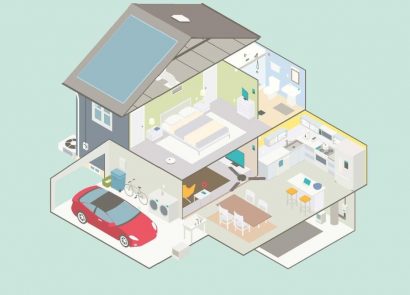Although the government announced that the number of people allowed to meet socially is being reduced from 30 to six in England, demands and pressure from friends to socialise at the pub or even go out for a meal can mean anxious thoughts begin to surface.
To give you peace of mind, Dr Oliver Robinson, senior lecturer in Psychology at the University of Greenwich has provided a few tips to help you feel confident when mixing in groups or going about life in general, post lockdown.
Learn How To Breathe
“When we get anxious, our breathing tends to become fast and shallow. We also tend to hold our breath without noticing when we are anxious.
“When we breathe deeply, in a rhythmic and relaxed way, this tells our brain there is nothing to fear, so leads to a reduction in feelings of anxiety. There are two steps to learning how to breathe in this way.
“Firstly, you need to learn how to do diaphragm breathing or ‘belly breathing’. There are a range of good YouTube videos to support you in this task.
“Secondly, once you have got the hang of diaphragm breathing, learn the practice of ‘square breathing’, where you breathe in and out on a four-part rhythm.
“A good app to support square breathing is the Calm app. The ‘breathe bubble’ breathing exercise for square breathing is free (click ‘More’ in the app menu to locate it).
“You will find that if you feel anxious when you are in a public place, practice square breathing for a few minutes and the feelings and physical symptoms of anxiety will dissipate.”
Make A Post-Lockdown Plan
“Set small goals first when going to public places again. Part of the difficulty of the Covid-19 situation is the fact that other people and open places are now perceived as a source of potential danger, as they are all potential carriers of the virus.
“You may find that you now feel anxious in places that previously caused you no anxiety at all. It may seem strange that you need to manage the anxiety of post-lockdown, given that lockdown itself has been so anxiety-provoking for many of us, and we have all longed for our freedoms back.
“But you do need to be ready for a new kind anxiety as you venture forth into environments that are potentially less safe than home. You need to ease yourself back into normal life, step by step.
“A good strategy to handle this is gradually increasing the size and scope of journeys away from home; starting off local and small-scale and gradually build from there. So, it is recommended to make a post-lockdown plan with a set of goals.
“Each goal involves going a bit further away from home and/or experiencing more kinds of places: supermarkets, restaurants, shopping centres, other towns and so on.
“Having a plan such as this also helps you to feel in control, which is critical when so much remains uncertain. Monitor how you feel as you are doing it and use your feelings as a guide.”
Be Assertive
“Don’t let others draw you into behaviours that could help allow the virus to spread again After the lockdown, you will be navigating a range of new rules when socialising or meeting others for work.
“Social distancing, face masks, avoiding physical contact in greetings and goodbyes, and hand washing are all features of this new social environment.
“Having not seen your friends for so long, when you see them it may be tempting to fall in line with old patterns and to ignore the new rules. But this is a great opportunity to practice acting assertively and ensure that no-one else’s behaviour makes you feel anxious.
“If someone is behaving in a way that goes against guidance and could help the virus to spread again, stand up for what you think is right and tell them. Being assertive has been shown to lessen feelings of anxiety, so it is great for your mental health too. Assertive communication is never accusatory, angry or aggressive. It means always starting your statement with something positive or empathetic, that shows the person you understand their situation, then putting forward your point of view calmly rather than a statement of fact and holding to it. Here is a good resource for assertive communication strategies.
The Joy of Routine
“Using schedules and daily rituals to keep your mind at ease. One of features of working life that people appreciate most is that it imparts a predictable structure to life, hence reducing uncertainty and unpredictability.
“With the increase in home working, routines and schedules that have been developed over years, which may include commutes, coffee breaks, exercise and lunches out, have disappeared for many.
“A key challenge with home working is to create your own routines and rituals that structure each day in an enriching way. You need to be your own boss. Sticking to a routine can be challenging.
“A good way of ensuring that you do so is by writing it out clearly and formally on a piece of paper, signing it at the bottom (as a way of committing yourself to it), and then putting it in a visible location where you often look.
“This external notice then acts as a clear stimulus for keeping your days ordered and balanced. In sum, goals, plans and schedules all work much better when they are written down.”
Limit Social Media
“Our brains are evolutionary wired to pay attention to threatening information. News channels and social media platforms use this fact to their advantage – they know people are far more likely to
tune in or click the link if the headline is a threatening or shocking one rather than a positive one.
“This is good for their traffic but bad for our mental health. During the coronavirus pandemic, consumption of news coverage has reached ‘unprecedented levels’. This is understandable as people want to keep informed, but the downside of too much news is elevated anxiety.
“To keep your own anxiety at manageable levels, you can intentionally limit your exposure to the news.
“For example, you can limit your checking of social media platforms and/or news websites to particular times in the day.
“As part of this, you can avoid doing so for an hour after you wake up and for an hour before going to sleep.”






















